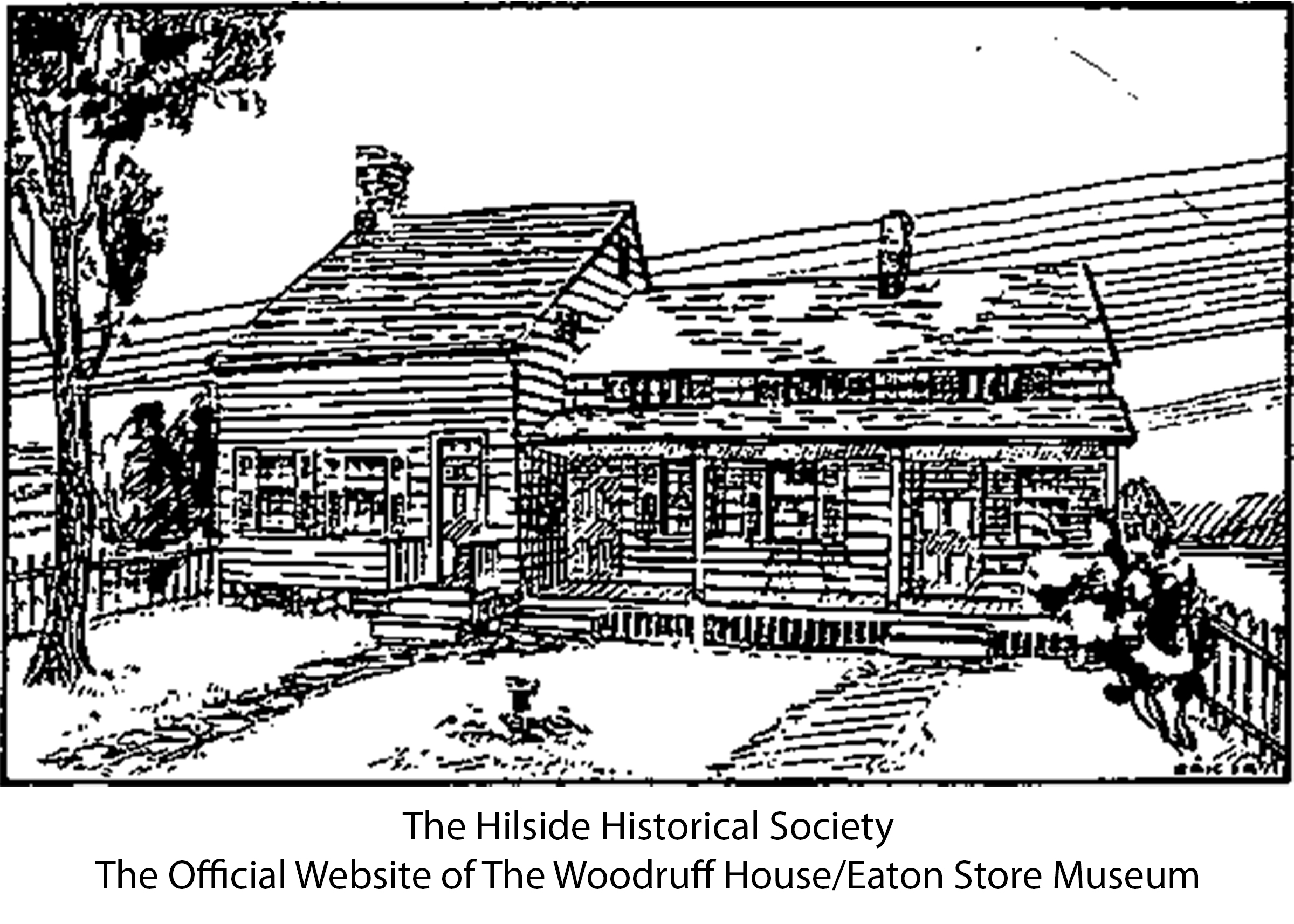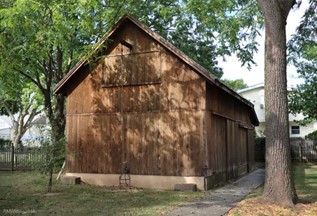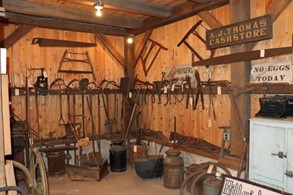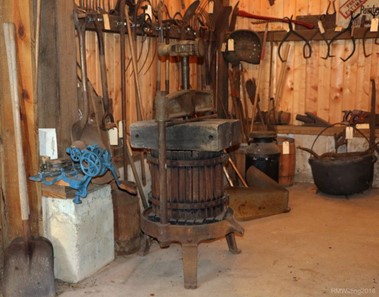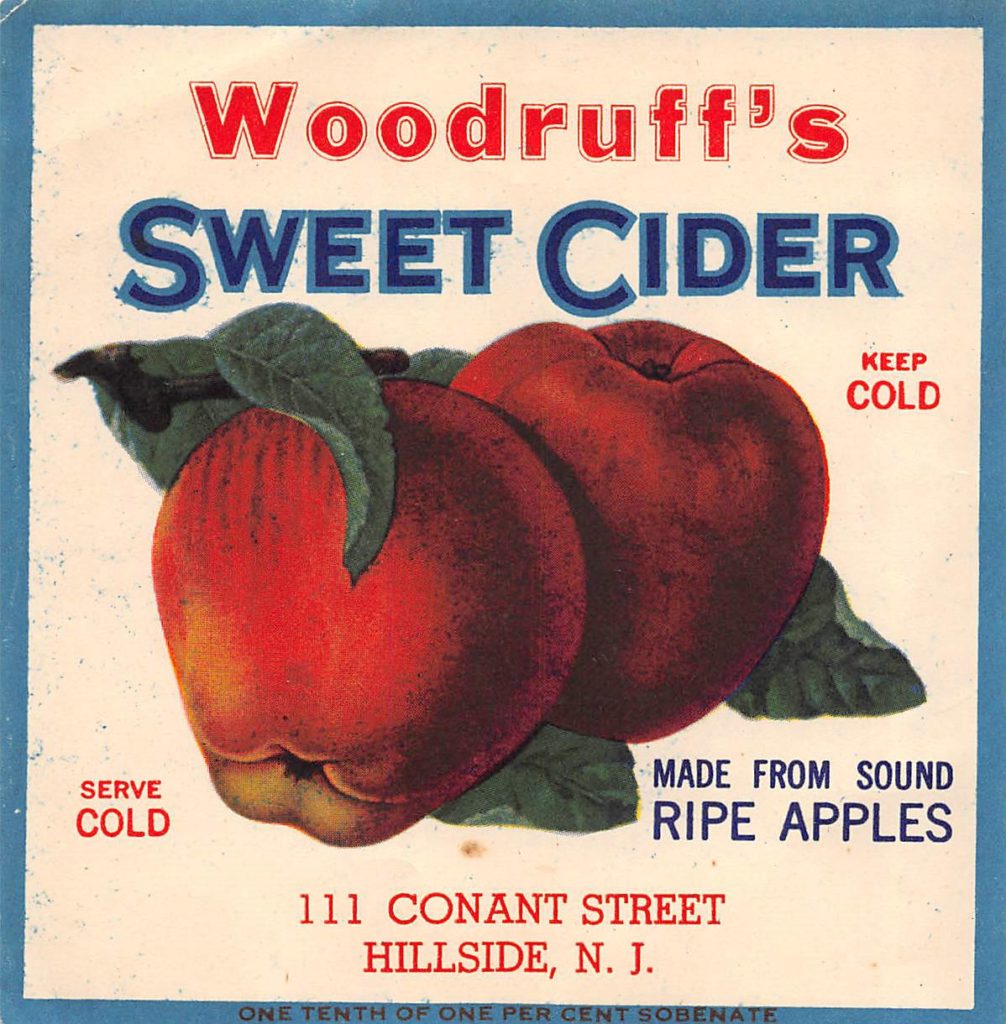“The Barn” is a new piece of history in Hillside. It was built only about 1989 to replace several barns which the Woodruff family lost to fires, along with cider mills long since gone. The barn is built very much as barns were constructed a hundred years ago and earlier.
Heavy beams and mortise-and tendon joints are held together with wooden pins instead of nails. Look around – the ends of the pins show up at all of the joints. Wooden pins are also visible at the tops of the rafters which hold up the roof. This type of framework makes for a strong building which can last for centuries.
Seen at different locations in the barn are various tools for everyday use on a farm. Here are some sickles, used to cut down grass and weeds. Here also is a combination scythe-and- rake used to harvest hay. Although the blade is now missing on this tool, it would have been fastened near the last finger of the rake so that the hay would be cut and gathered with each swing of the scythe, and left to be picked up later.
Cutting tools must be kept sharp to do the best work. Near the wall is the grindstone, a large round light-colored wheel on a stand. It can be operated by a foot treadle, or it can be turned by a crank handle on the other side. The wheel is abrasive, or gritty, and when rotating will sharpen knives and other tools held against it. A hooked rod sticks up over the wheel upon which a small container of water should hang. A small spigot on the can allows a few drops of water to drip constantly onto the work to keep it cool. Otherwise the friction of the wheel might overheat the work and burn it.
Resting on the beam and leaning against the wall are three buck saws. They are used to cut firewood from logs resting in a saw-buck, which is an “X” shaped stand made of wood. Used with two hands, a sharp saw can easily cut logs of eight or ten inches in diameter to fireplace length. The wood can then be split with an ax, or perhaps with steel wedges and wooden mallet, such as one on display.
Also on exhibit are shoemaker lasts, needed for the repair of boots and shoes. Slipping a worn shoe over the foot-shaped support would allow the person to nail new heels or soles on the old shoes. Shoemaking was a different task many years ago, and repairs were often necessary.
The Woodruff family for many years was known for vast apple orchards which once covered much of the area. Several cider mills of the Woodruffs existed at different times, some of which were destroyed within memory of some older neighbors. The last built Woodruff cider mill still stands almost directly back from here, on Woodruff Place. It was converted about 1924 into a two-family house. Meanwhile, the barn displays here an example of a small hand operated cider press for making of apple juice or cider. In this press, cut-up apples are placed inside the tub, and the screw is used to squeeze them so the liquid runs out through the slots in the tub into the tray below.
